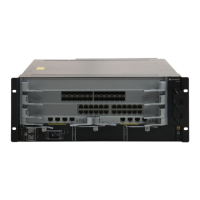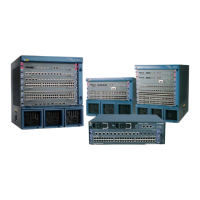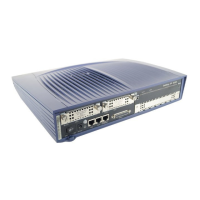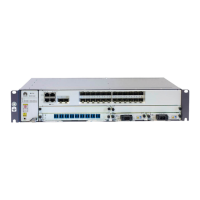Operation Manual - STP
Quidway S3500 Series Ethernet Switches Chapter 1 MSTP Region-configuration
Huawei Technologies Proprietary
1-7
The port receiving the optimum configuration BPDU is designated to be the root port,
whose configuration BPDU remains the same. Any other port, whose configuration
BPDU has been updated in the step Select the optimum configuration BPDU, will be
blocked and will not forward any data, in addition, it will only receive but not transmit
BPDU and its BPDU remains the same. The port, whose BPDU has not been updated
in the step Select the optimum configuration BPDU will be the designated port. Its
configuration BPDU will be modified as follows: substituting the root ID with the root ID
in the configuration BPDU of the root port, the cost of path to root with the value made
by the root path cost plus the path cost corresponding to the root port, the designated
switch ID with the local switch ID and the designated port ID with the local port ID.
The comparison process of each switch is as follows.
Switch A:
AP1 receives the configuration BPDU from Switch B and finds out that the local
configuration BPDU priority is higher than that of the received one, so it discards the
received configuration BPDU. The configuration BPDU is processed on the AP2 in a
similar way. Thus Switch A finds itself the root and designated switch in the
configuration BPDU of every port; it regards itself as the root, retains the configuration
BPDU of each port and transmits configuration BPDU to others regularly thereafter. By
now, the configuration BPDUs of the two ports are as follows:
Configuration BPDU of AP1: {0, 0, 0, AP1}.
Configuration BPDU of AP2: {0, 0, 0, AP2}.
Switch B:
BP1 receives the configuration BPDU from Switch A and finds that the received BPDU
has a higher priority than the local one, so it updates its configuration BPDU.
BP2 receives the configuration BPDU from Switch C and finds that the local BPDU
priority is higher than that of the received one, so it discards the received BPDU.
By now the configuration BPDUs of each port are as follows: Configuration BPDU of
BP1: {0, 0, 0, AP1}, Configuration BPDU of BP2: {1, 0, 1, BP2}.
Switch B compares the configuration BPDUs of the ports and selects the BP1 BPDU as
the optimum one. Thus BP1 is elected as the root port and the configuration BPDUs of
Switch B ports are updated as follows.
The configuration BPDU of the root port BP1 retains as {0, 0, 0, BP1}. BP2 updates root
ID with that in the optimum configuration BPDU, the path cost to root with 5, sets the
designated switch as the local switch ID and the designated port ID as the local port ID.
Thus the configuration BPDU becomes {0, 5, 1, BP2}.
Then all the designated ports of Switch B transmit the configuration BPDUs regularly.
Switch C:
CP2 receives from the BP2 of Switch B the configuration BPDU {1, 0, 1, BP2} that has
not been updated and then the updating process is launched. {1, 0, 1, BP2}.

